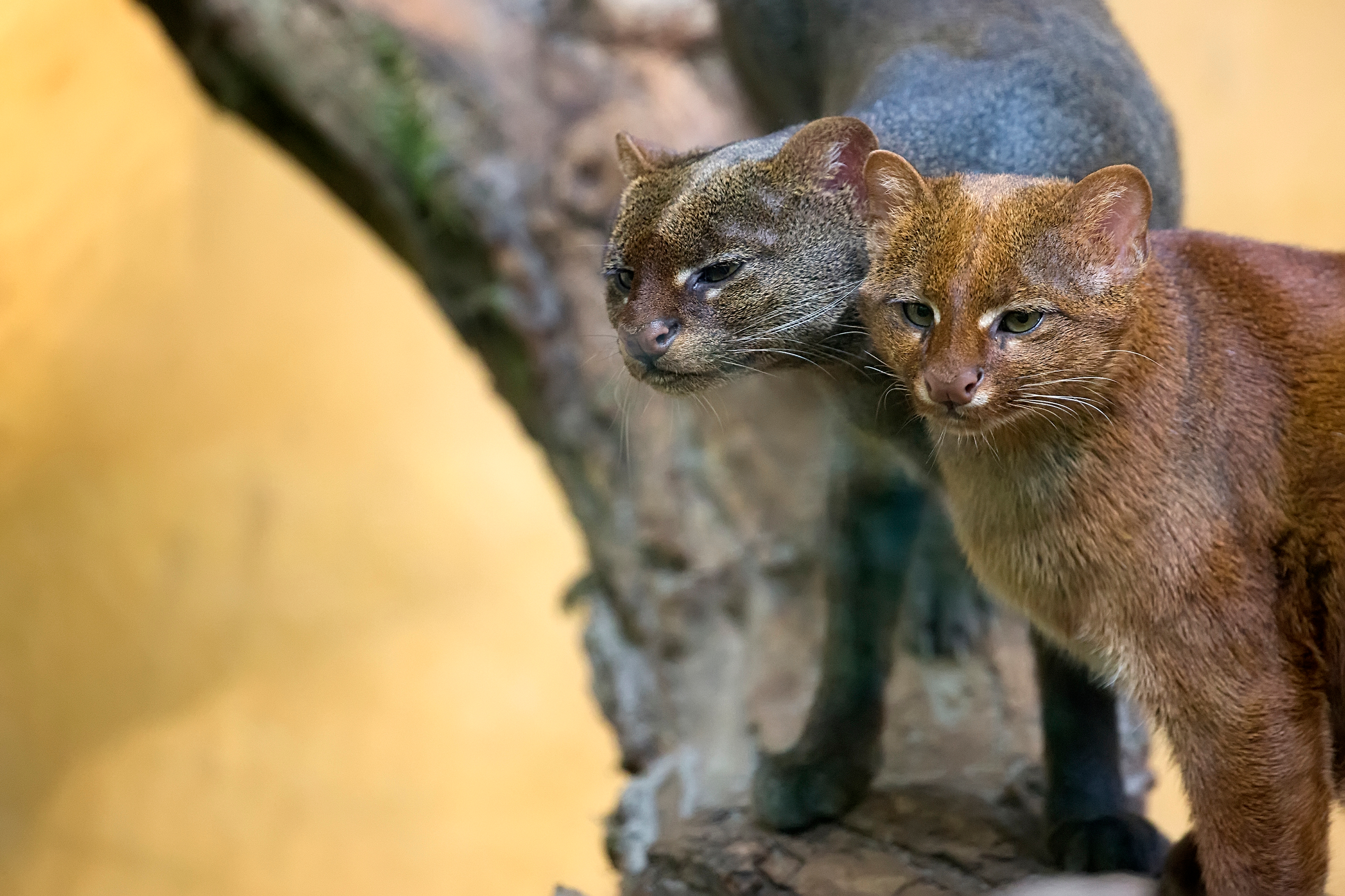What does a cat look like? You’ve probably got a pretty good idea: big teeth, murder mittens, a range of facial expressions that make for excellent memes. Now imagine all of that, but with a hefty dose of mustelid thrown in, and you’ve got yourself one of the weirdest-looking cats out there – the jaguarundi.
Despite having “jaguar” in the name, this strange little wild cat is actually thought by some to be more closely related to the puma, which is why you might see it mentioned with two scientific names: Herpailurus yagouaroundi, the older one, or Puma yagouaroundi, the more recent one.
We say closely – it diverged from the same branch as the puma somewhere between 4 to 7 million years ago, and since then, they’ve clearly taken quite different directions when it comes to appearances, even if they’re linked genetically.
The jaguarundi doesn’t particularly look like its relatives – in fact, it doesn’t look much like a cat at all. It might be only a little bigger than a house cat, but the jaguarundi has an elongated body and tail, short legs, and a small, flat head that makes it look more like an otter or a weasel. In some places, it’s even known as the “otter cat”.
It’s not just in appearance that they share similarities with otters either. The stereotype might be that cats dislike water, but these particular felines are thought to be pretty adept swimmers, having been seen heading into ponds to catch a fish supper.

Jaguarundis come in two main color morphs.
Image credit: Janusz Pienkowski/Shutterstock.com
But beyond their strange exterior, there’s actually still a lot we don’t know about the jaguarundi. That might seem unusual given that they have a range that totals 19 countries, extending all the way from Mexico down to northern Argentina; they’re one of the most commonly seen cats across that area.
However, as Ruth Kamnitzer explains for Mongabay, there are three main reasons why this is the case: they’re hard to trap; it’s difficult to identify individuals because they have plain coats, without any markings; and they’re considered to be a species of “Least Concern” by the IUCN, meaning they usually aren’t a research priority.
“To be clear, you will never convince anyone to give you money to study the jaguarundi,” conservation biologist Anthony Giordano told Kamnitzer.
That may well need to change. The IUCN’s current assessment of the species is marked as needing an update, something that will require a decent chunk of research in order to make sure the jaguarundi’s conservation status is accurate.
It might currently be low on the priority list, but the jaguarundi still faces threats, including habitat loss and fragmentation, and being killed for predating on poultry. If not for lack of data, the species might’ve been listed as “Near Threatened” last time around.
Whether or not the jaguarundi’s status will change with the impending result of the IUCN’s reassessment is yet to be seen, but what is clear is that this far-out felid is very much worthy of our attention.
Source Link: Cat Or Otter? The Jaguarundi Looks Like Both